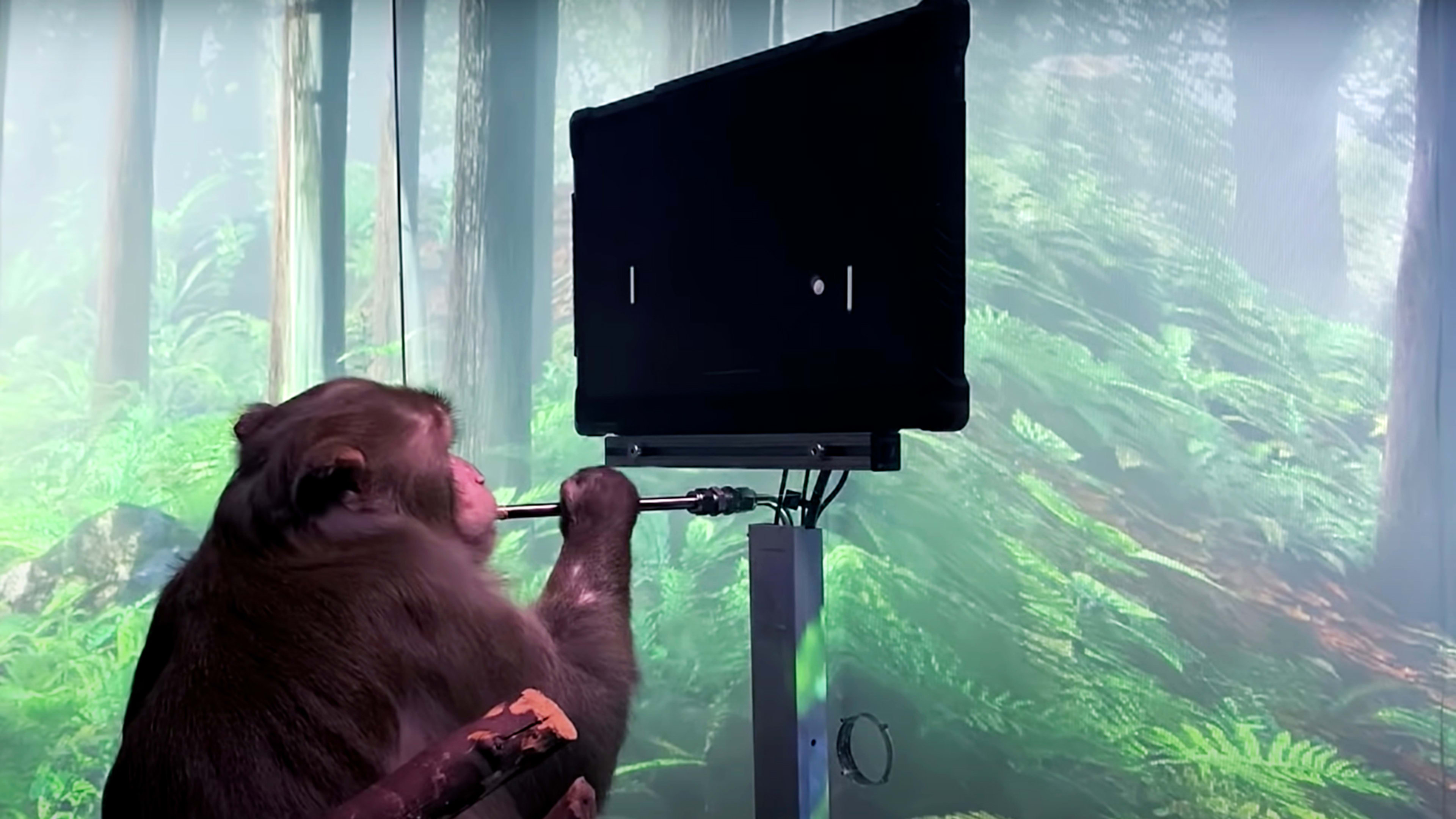For the first time, Elon Musk has shared video footage of his brain-chip technology Neuralink. The implantable chip allows the brain to communicate with computers. In a video released late Thursday, a macaque monkey implanted with Neuralink’s technology appears to play a Pong-style tennis video game without using a controller of any kind.
In the video, a narrator explains that the macaque, named Pager, has two Neuralink chips implanted in his brain. These chips pull and record information from more than 2,000 electrodes that have been placed in Pager’s motor cortex in order to register his desired hand and arm movements.
First, Pager plays a computer game using a joystick. The Neuralink chips record that information. The Neuralink wirelessly communicates neural activity to a database, where it is matched with Pager’s hand movements, so it can be processed and analyzed. Then the joystick is taken away and Pager is set up to play the game just using his brain. This time, the Neuralink technology uses AI to estimate his desired movements based on neural activity.
While compelling to watch, this technology is not new. Miguel Nicolelis, a professor at Duke School of Medicine and founder of the school’s Center for Neuroengineering, conducted a similar test in 2003, though the technology then was not yet wireless. It should come as no surprise that much of Neuralink’s work is based on Nicolelis’s pioneering brain-machine research. (Max Hodak, the company’s president, worked in Nicolelis’s lab at Duke.)
Neurlink is hoping to advance the technology by creating better chips and sensors so that these implants can collect more neural activity, as explained in this report from Inverse. The goal for this technology ultimately is to help people who aren’t able to use conventional methods of interacting with computers. As the tech evolves, Musk says, it could potentially “help paraplegics to walk again.”
First @Neuralink product will enable someone with paralysis to use a smartphone with their mind faster than someone using thumbs
— Elon Musk (@elonmusk) April 9, 2021
Neuralink is one of many companies investigating brain-computer interfaces. Facebook is working on similar technology that would allow people to use their brain to type. Unlike Neuralink, Facebook is using a noninvasive device to act as an intermediary between the brain and the computer, which is to say no surgery required. Microsoft is also working on research in brain-computer interfaces. It’s not often that these companies provide much transparency on just how much technological progress they’re making, though Facebook did recently demonstrate brain-input technology being used in a wrist wearable as part of a future AR system.
The mystique around the whole idea of direct brain control is why Neuralink’s new video has gotten so much attention. Still, Musk—whose visions often far exceed current reality—has yet to prove that Neuralink’s technology can do more than play games.
Recognize your brand’s excellence by applying to this year’s Brands That Matter Awards before the early-rate deadline, May 3.
